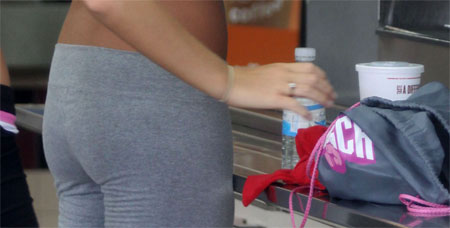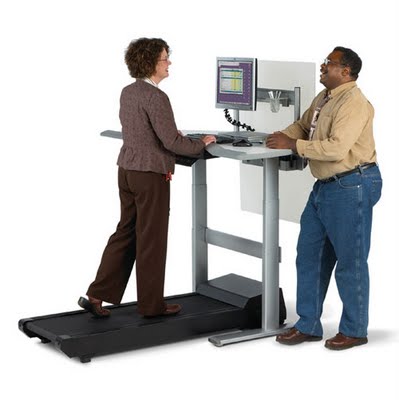Pancake Butt = Injury Risk?
 As part of my professional development I'm always assessing. To clarify, I take it upon myself to look at how people fill out their jeans. Honestly, I try not to be creepy about it, but it tells me a lot about the person.
As part of my professional development I'm always assessing. To clarify, I take it upon myself to look at how people fill out their jeans. Honestly, I try not to be creepy about it, but it tells me a lot about the person.
With a quick glance, I can tell:
- if you're strong or weak in general
- if you ever squat below parallel
- if you jump and sprint ...or just walk, jog, or run for “distance”
- if you're more likely to have common running related injuries
- quite simply how you live and what your lifestyle is like
 Quick survey: Raise your hand if you sit for a living. Come on, get those hands up!
Quick survey: Raise your hand if you sit for a living. Come on, get those hands up!
We sit and eat our breakfast.
We sit while we drive to work.
We sit at our desk.
We sit at lunch.
We sit at our desk after lunch.
We sit while we drive back home.
Or we go to the gym and workout (yes, way to go!!)
But wait - some of you SIT while you 'exercise'. (Thanks, Nautilus)
Then we sit and eat dinner.
And finally we sit on the couch while we watch TV.
At some point we may get up and go to the bathroom (more sitting?)
Or we raid the fridge for ice cream so that we can get in a final dose of sitting while watching more TV.
Are you standing yet? ;-)
So it's no wonder our butts are flat and weak. By sitting, we are training our glutes to be that way. If how we look is a by-product of how we live, then it all makes sense to me.
When it comes to common running related injuries, so many of them can be traced back to dysfunctional glutes. Dysfunction could mean basic weakness or neurologically inhibited, almost like your brain has forgotten how to activate the muscle.
So let's name some of these injuries which are caused in part by weak or inhibited glutes.
- Piriformis Syndrome
- IT Band Syndrome
- Runner's Knee (patellofemoral syndrome)
- Hip Bursitis
- Hamstring strains/pulls
- Achilles' Tendinopathy
- Ankle Sprains
- And let's throw Medial Tibial Stress Syndrome (shin splints) in there, too.
So what do you think about that? Have you ever heard of any of those injuries? Probably. I mean, that's nearly all of them!
I'm not going to get into the mechanism behind each issue, but usually if your body doesn't get support from the glutes it will get it from some other place. The result is that tissues that aren't supposed to be getting stressed, get stressed!
So what are you going to do about it?
For one, try standing more often. This will go a long way toward improving your hip health in general. Want to put off degenerative hip disease? Stand more. Wanna burn 2 calories per minute instead of 1? Stand up! What are some ways in which you can increase the amount of time you spend standing?
While standing is a good first step, to make real progress you'll be required to do some work. Next week I'll give you a few assessments to check your glute strength and a some exercises to begin strengthening this critical part of your body.
PS: To paraphrase Ryan Andrews, remember - how you look is a DIRECT result of how you live.

